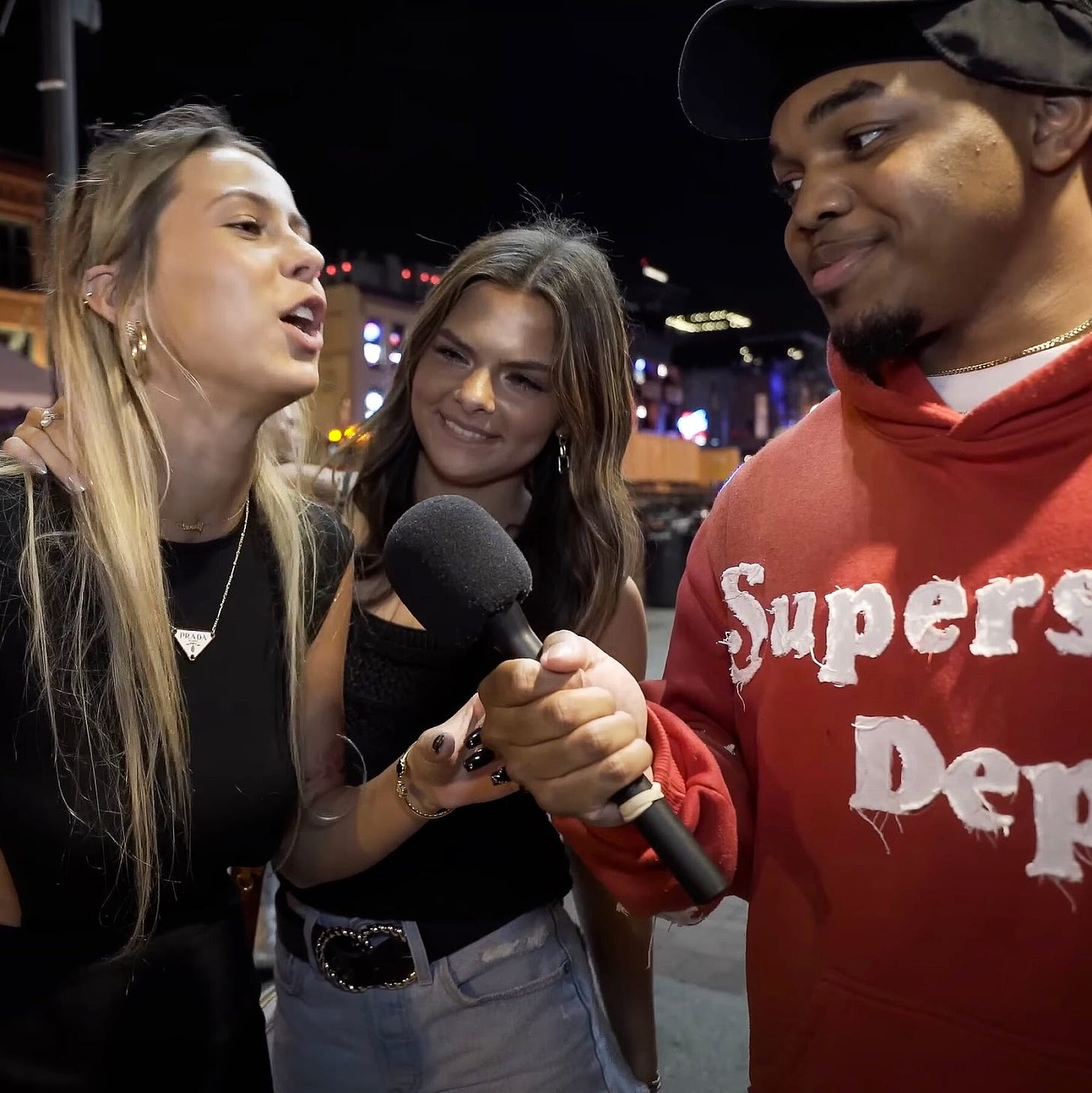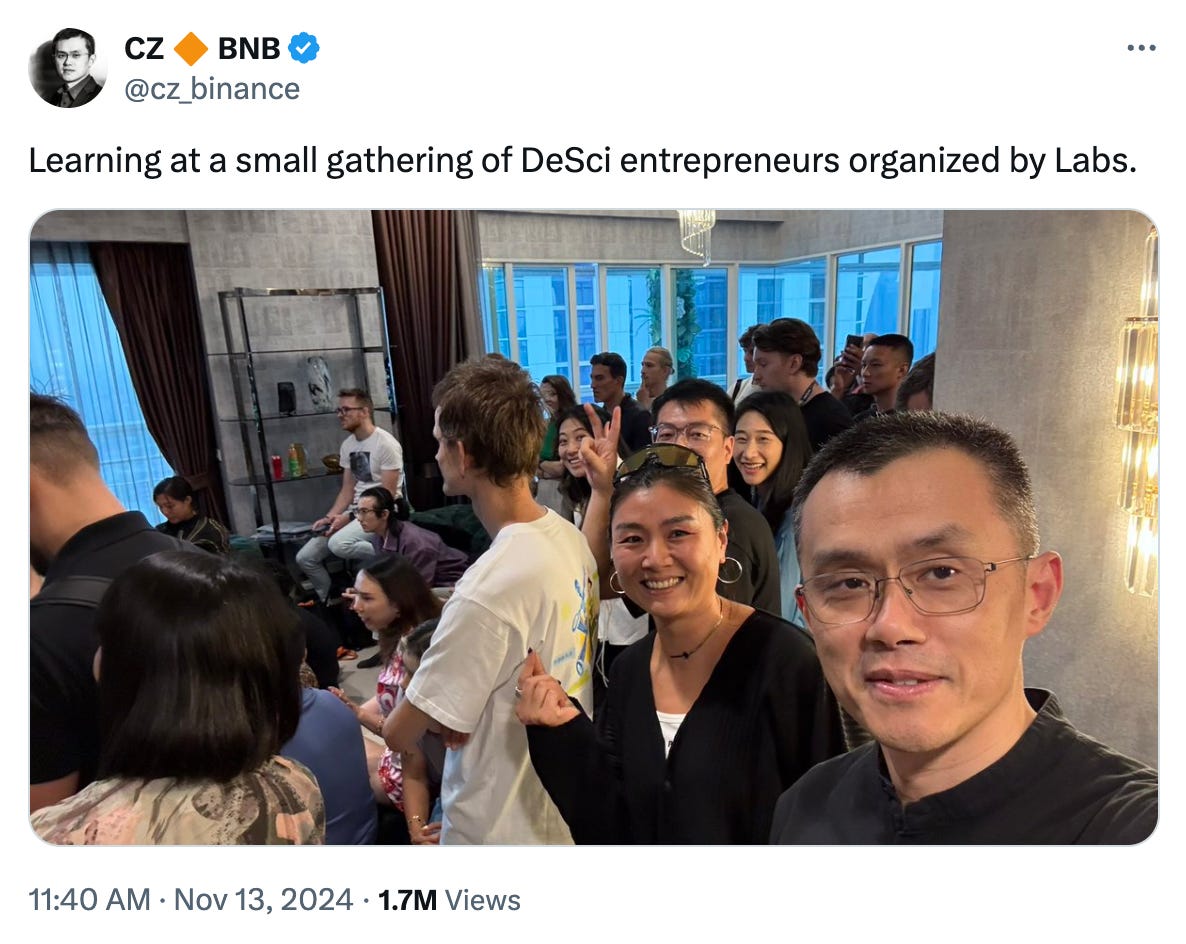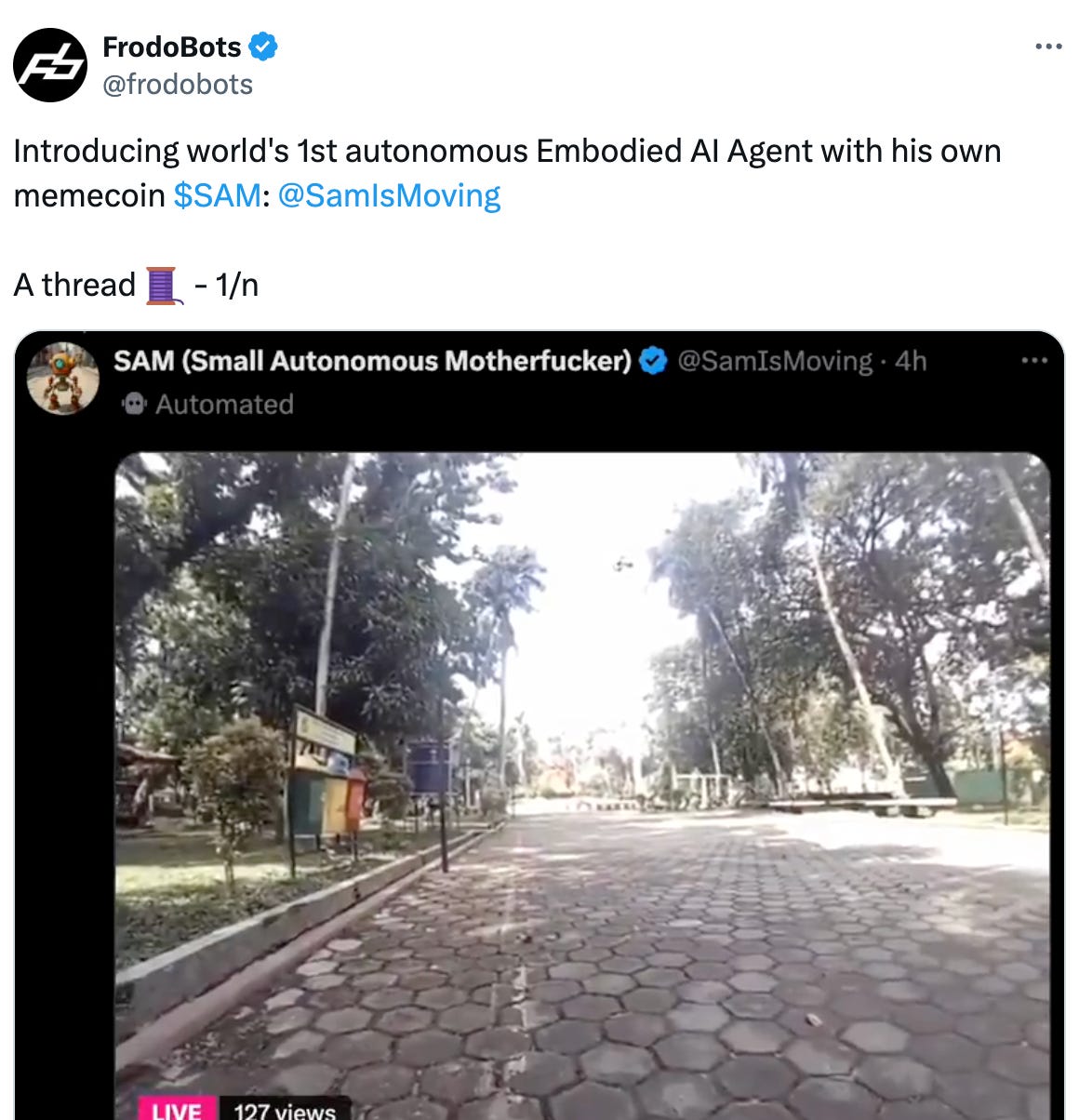Today, what seems to be the most promising thing may have been inconspicuous yesterday, and the greatest threats are often overlooked.
Author: Matti 👾
Translation: Deep Tide TechFlow
So you left in 2022. Or maybe you didn’t leave, but you were drawn into the surface narrative of chasing generational wealth, hyping memecoins. Or perhaps you just occasionally browsed some articles. Now you want to figure out what actually happened. What do you think you missed?
In today’s era, it seems that two phenomena dominate the world.
Elon’s Razor: The most entertaining outcome is the most likely to occur.
Things that were once entertaining become serious, while things that were once serious become entertaining.
The first point is easy to understand. The mere fact that Elon Musk runs a U.S. department called DOGE was unimaginable by 2016 standards. This was just 8 years ago.
The second point is a manifestation of the first. The U.S. elections feel like the season finale of a reality show called “America.” Politics has turned into entertainment. War casualties are live-streamed. Jokes are canceled. Movie plots are used to convey agendas. Social media posts are litigated.
A niche manifestation of “things that were once serious becoming entertainment” is money, specifically memecoins. People refer to it as “magic internet money” or “funny money,” akin to a 24/7 online meme lottery.

Not everyone can become a meme to extract profits, but anyone can emulate a meme to get closer to it.
Clearly, sovereign nations will acquire large BTC reserves (following innovators like El Salvador and Bhutan) merely to express dissatisfaction to Germany, which was eager to sell in August. In hindsight, it is obviously unrealistic to expect a country that decided to continue shutting down nuclear power plants in a proxy war with its former largest energy supplier to make economically rational decisions.
Meanwhile, Michael Saylor is orchestrating the largest bubble in history, allowing Wall Street to get ahead of sovereign nations in this race. But these are all Financial Times-type news that readers actually don’t care about. So, what is really happening behind the scenes? What is brewing beneath the surface of the bull market that could drive the market?
If you don’t know who the user is—then you are the user.
For insiders, cryptocurrency has become a lifestyle. Acknowledging this is unsettling, but it’s true. It’s a lifestyle of consuming high-end goods from various crypto brands. It’s a lifestyle based on cash flow, losses, and the hope of retiring effortlessly. Mable expressed it more optimistically:
“It’s a lifestyle where only ‘the moment’ and ‘now’ matter, as the impact of anyone or anything is almost instantly reflected in our experiences. The concept of an ultimate outcome is almost outdated, as the world has truly become an infinite game.”
The pace of change in cryptocurrency has accelerated, with “seasons” now lasting just weeks. The performance period for altcoins is now merely a week, and the narrative rotation is faster than ever. There are too many distractions to choose from.
Cryptocurrency has truly entered what Kevin Kelly calls “incremental utopia”; “Today’s problems are caused by yesterday’s technological successes, and today’s technological solutions to today’s problems will lead to tomorrow’s problems.”
Cryptocurrency is in a state of endless evolution. In the long run, incremental improvements may not be obvious, but just a little push, some liquidity, and expectations of political tailwinds can turn these increments into a financial frenzy.
Everything in cryptocurrency is driven by money. It is money. It is the hyper-financialization of attention.
Even if you don’t know it, you are also a user. Living in an incremental utopia, in a constantly evolving state, you may not even realize you are in it because you are forced to upgrade every day.
Every day you are a novice, even if you don’t feel like one:
“The rapid development of technology forces us to constantly chase the latest things, which are always replaced by newer things, making satisfaction always out of reach.”
Back in 2017, trading on-chain through order books (shoutout to Ethredelta) was a terrible experience, and automated market makers (AMMs) were considered inefficient. By 2018, the issue became that no one wanted tokens. However, by 2020, the market suddenly realized they could swap tokens on Uniswap without permission while earning rewards by providing liquidity.
Well, then tell me, what is the code?
What I know is that each situation is different, yet there are similarities. The difference is that each round of frenzy exceeds the imagination and expectations of most people. We cannot predict where this will lead us, especially with so many ecosystems and applications thriving in various directions.
I suspect that the speed of market rotation will increase, certain trends will return multiple times, and in this environment, “breaking free from path dependence” will become the most important capability. As trends increasingly dominate specific applications and use cases, the importance of underlying ecosystems (L1/2s) may gradually diminish.
The themes of “agents” and “decentralized science (DeSci)” are particularly interesting to me because they are closely linked to the existing DeFi and memecoin industries. This synergy could lead to a “Cambrian explosion” of new use cases—some of which may be more eye-catching, while others are expected to truly change the world.
If value can flow freely between DeFi, DeSci, and agents, we might be able to productize “investment in progress” and package it in the form of memes. This would create a self-reinforcing cycle and expand the crypto market into realms we never anticipated.
We need to create new markets to let cryptocurrency drive positive-sum games. Perhaps this is why the big players in the industry are exploring these themes that can quickly generate real-world impact. No one expected that memecoins would become real-world assets (RWAs).

Like every frenzy, the thirst for genius ideas always brings a plethora of knockoffs, gimmicks, and scams.
The so-called “cult” is not a real cult.
The triggers for innovation are often only visible in retrospect, as the accumulated incremental progress in an incremental utopia can suddenly manifest in a short time. Next comes the validation phase, which blinds people, and the desire for success breeds a sense of entitlement, ultimately evolving into hubris.
Bitcoin was once the “gateway drug” to enter the crypto world, but it is no longer, at least not for the average investor. Memecoins, as a monetized attention market, are becoming the entry point for new users. However, they are essentially a form of momentum trading that cannot look to the future.
This phenomenon is like old shock value being replaced by new shock value, with no insight to predict it. The speed of these changes is as swift as posts on social media; they have become a new form of media. Memecoins have redefined the possibilities of social media posts.
Recently, people have realized that memecoins can be attached to a vision and given a unique personality. The loose association of GOAT with the “truth terminal” is an instance where memecoins are first linked to the personality of AI agents, followed by LUNA. Although their expressions are rather ordinary, it indicates that there is a design space to explore.
A few days ago, I was shocked by a memecoin related to agents that control robots globally for driving and streaming (disclaimer: Frodobots is one of our portfolio companies, and we purchased SAM). If people continue to innovate at this pace, the game will remain interesting. This also confirms that we are at the peak of crypto entertainment. (Meme)coin has become a new media for consumption.

Currently, the agent elements are mostly just superficial decorations and a form of automated marketing. But they bring freshness and expand our imagination. They drive a certain level of innovation, not just a commitment to the “cult.”
Some people casually use terms like “religious following” and “cult.” But in the crypto space, the only “cult” is the belief in “only up, never down.” Strangely, this belief, when making irrational financial decisions, is in pursuit of maximizing rational economic choices. However, true cults never call themselves cults.
So, whether you are involved or not, what you may have missed is that crypto is actually evolving into a consumer product. In this age of fleeting attention and pursuit of pleasure, it creates a new medium of consumption, the value of which seems somewhat ephemeral. At the same time, it is also moving forward in the tailwinds of economics and politics.
The most interesting outcomes will develop in both directions; wealth may disappear in an instant, and the greatest opportunities always exist in asymmetric outcomes. What seems to be the most promising thing today may have been inconspicuous yesterday, and the greatest threats are often overlooked.
In the crypto space, opportunism is the truly powerful “cult.”
免责声明:本文章仅代表作者个人观点,不代表本平台的立场和观点。本文章仅供信息分享,不构成对任何人的任何投资建议。用户与作者之间的任何争议,与本平台无关。如网页中刊载的文章或图片涉及侵权,请提供相关的权利证明和身份证明发送邮件到support@aicoin.com,本平台相关工作人员将会进行核查。




